Careless packing in the container considerably increases transport risks. Damage is inevitable if the ships carrying the containers encounter severe weather.
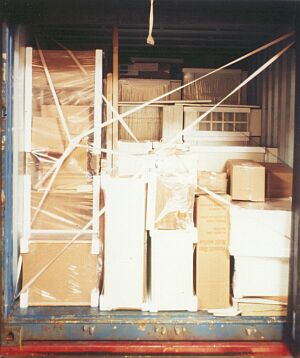 |
Careless packing of kitchens and kitchen accessories |
Reference is made in connection with this photograph to the "General notes on packing box containers", "General cargo in box containers" and "Basic stowage methods". Packing without gaps is intended to deprive packages of the ability to move even slightly during container transport. Deciding how to pack fragile components, such as granite work surfaces or kitchen units with glass panels, is not simple. Such components are best packed lengthwise and on edge for road and rail transport and for athwartships stowage of the container on board ship. For standard transport on board ship in fore and aft stowage, they should preferably be packed crosswise and on edge.
This latter variant is only feasible for relatively short components whose length does not exceed the width or height of the container. Longer work surfaces inevitably have to packed lengthwise and on edge.
The work surfaces must be packed so compactly that they have absolutely no freedom of movement. Cushioning materials must not be used as the continual motion of the ship and the consequent compaction of the material will create space for the cargo to move about in, so greatly promoting the risk of damage.
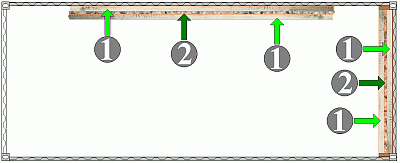 |
|
| Rigid packing of granite slabs |
Sufficiently rigid wooden members (1) protect the vertically packed granite slabs (2) from breakage. Another packing option is to use A-frames.
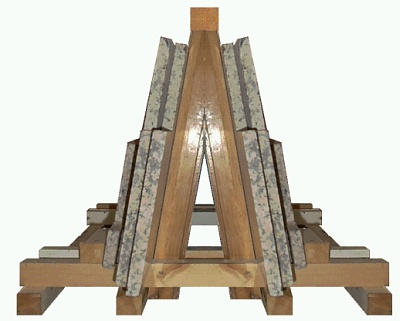 |
|
| Granite slabs on A-frames |
The granite slabs must be secured on the A-frames with a sufficient quantity of strapping. The frames themselves must either be blocked, lashed or stowed so compactly by other items of cargo that they are prevented from moving at all in the container.
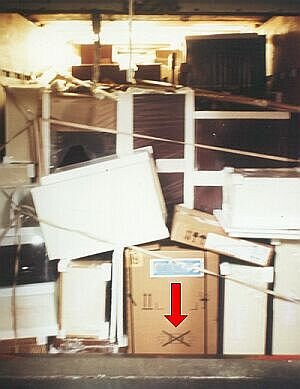 |
Incorrect packing of electrical goods |
Any packages containing electrical items must be packed in such a way that they are not exposed to harmful pressure: It is essential to comply with any printed handling symbols, in this case: protect from lateral stresses. If required, the items of cargo must be protected with inserted bracing.
 |
|
| Protecting a pressure-sensitive package with wooden bracing |
Lateral forces are kept away from the sensitive package by means of horizontal wooden members (a) in conjunction with wooden uprights (b).
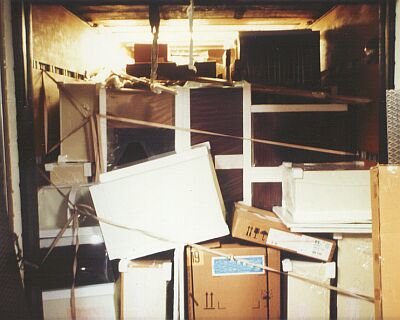 |
|
| Negligent and careless packing increases the risk of damage. |
Consistently neat and tidy packing is an essential prerequisite. Damage is inevitable when cargo is packed as shown. "Securing" the packages in the door area with webbing belts is useless. If an interlocked stow cannot be created, wooden lattices or similarly effective methods must be used to provide a secure cargo end face.
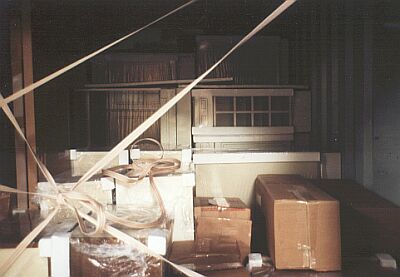 |
|
| Inadequate stowage and securing of kitchen furniture in a container |
Depending on the destination, care may have to taken to ensure that cardboard packaging and the steel container walls do not come into direct contact. If cardboard packaging containers come into contact with condensation, they will soften and the contents will be damaged. In this case too, the negligent packing and inadequate cargo securing merit the severest criticism.